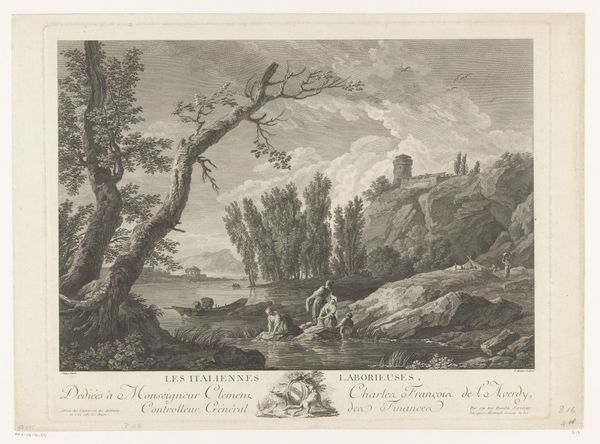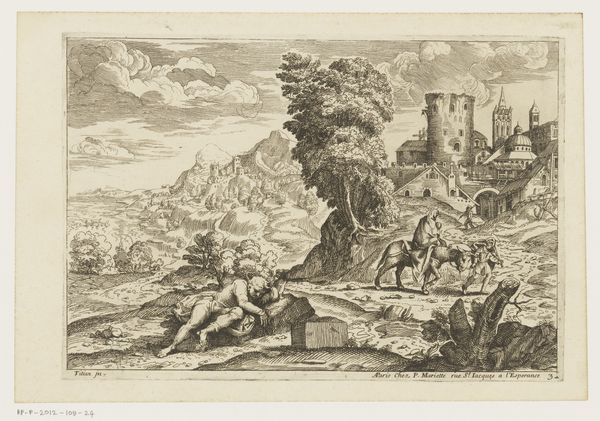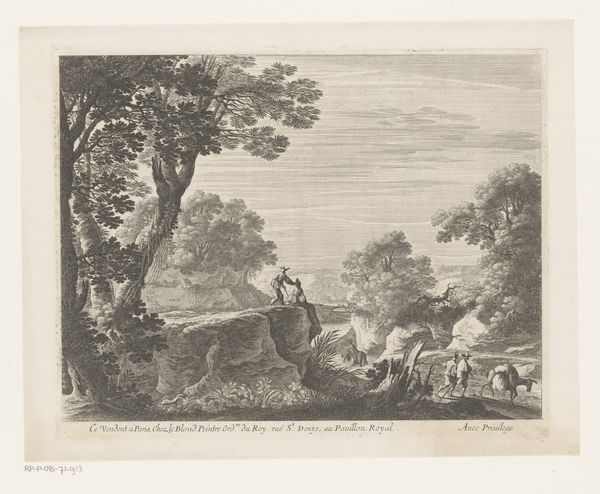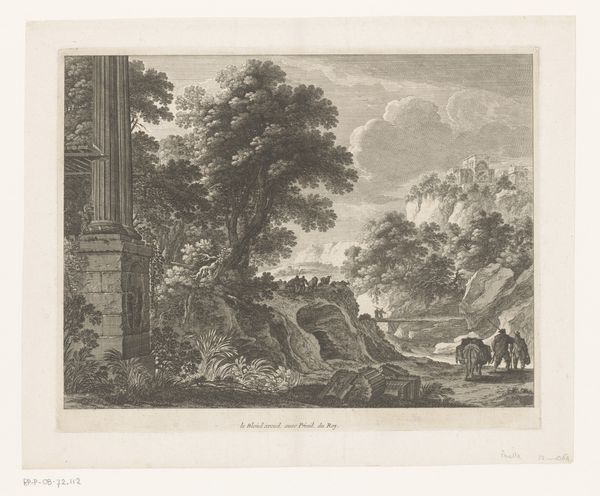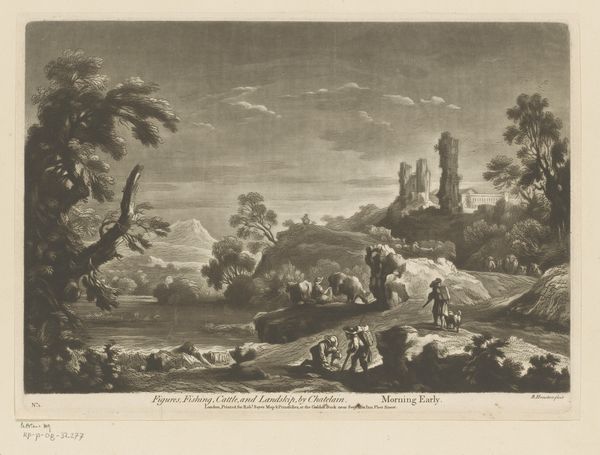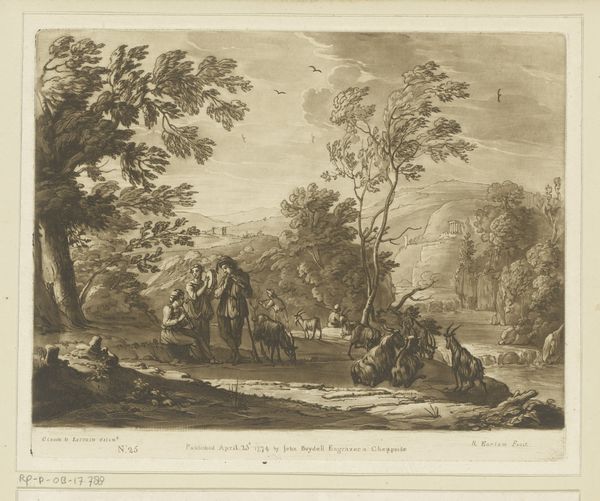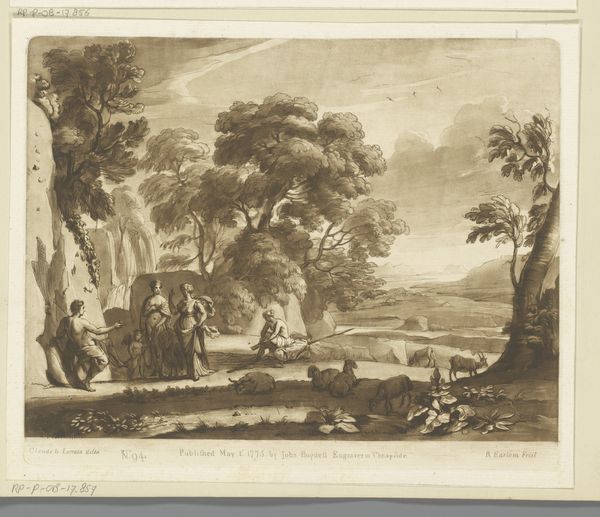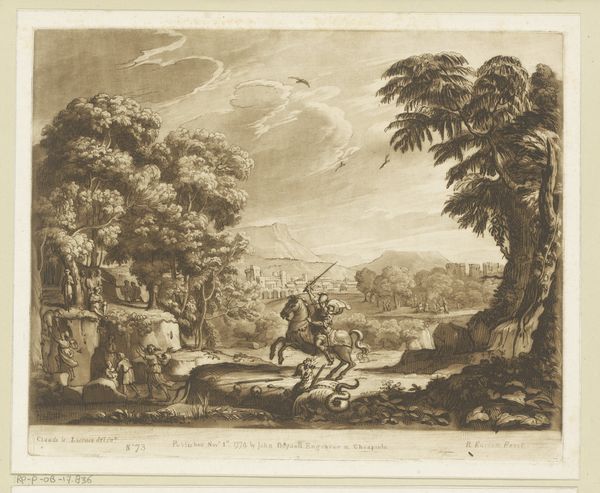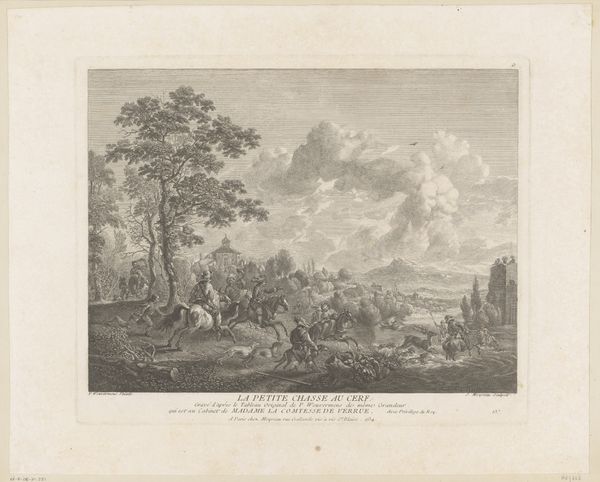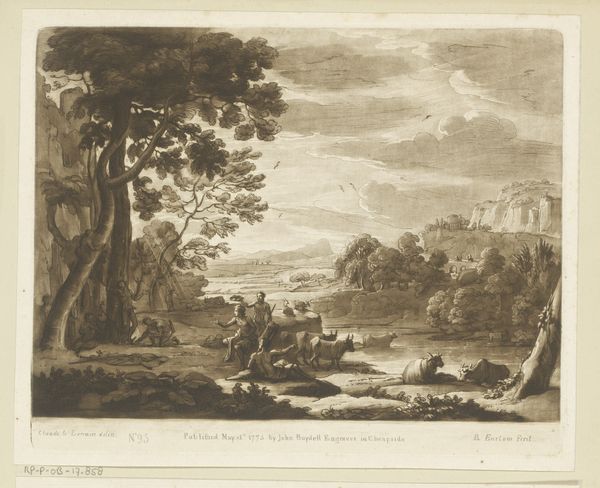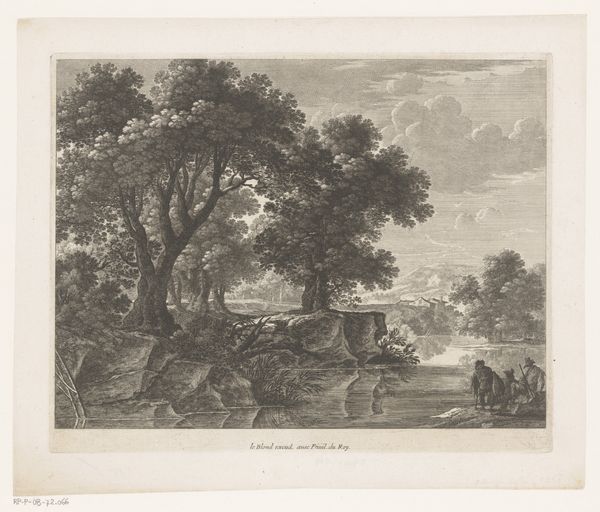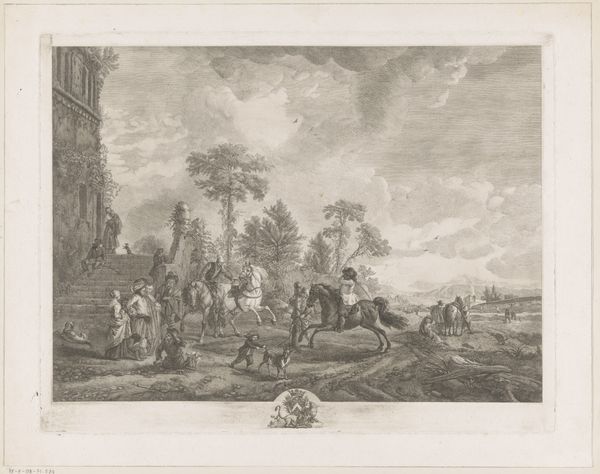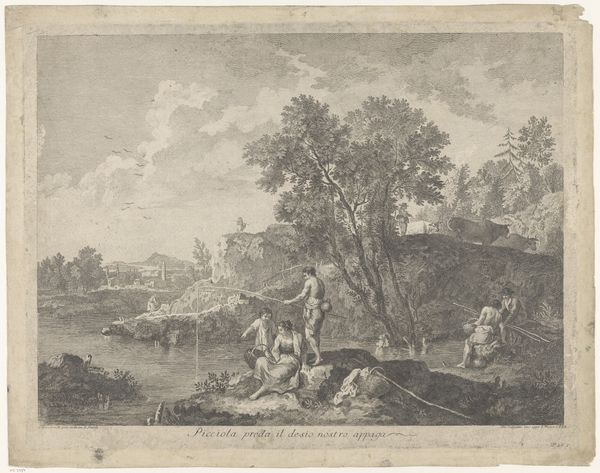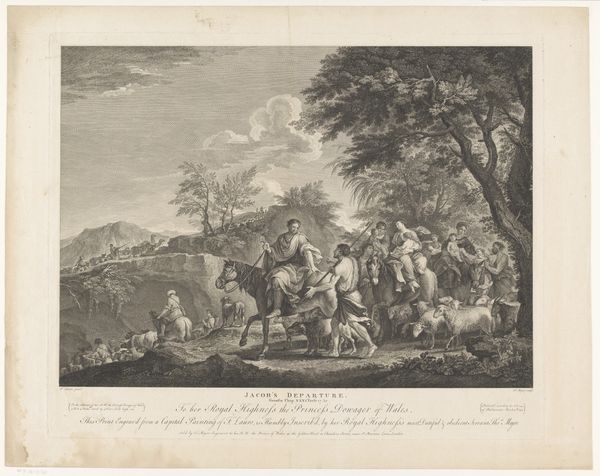
print, engraving
#
aged paper
#
toned paper
#
light pencil work
#
baroque
# print
#
pencil sketch
#
old engraving style
#
landscape
#
river
#
engraving
Dimensions: height 354 mm, width 452 mm
Copyright: Rijks Museum: Open Domain
Editor: Here we have "Rivierlandschap in de Levant," a 1760 engraving by Jacques Aliamet, currently held at the Rijksmuseum. It has such a gentle, almost romantic feel, with this detailed depiction of figures along a riverbank. How would you interpret the context around an image like this? Curator: Well, immediately I'm drawn to the title. "Levant" wasn't just a geographical location, it was a loaded term in 18th century Europe. It represents a fascination, often a very skewed one, with the 'Orient.' Aliamet likely never saw this place. This idealized vision speaks volumes about European perceptions and power dynamics at the time, wouldn't you say? Editor: That's fascinating! So, the print is less about accurate representation and more about constructing a European fantasy of this region? Curator: Precisely. Notice the details – the classical ruins, the somewhat staged interactions of the figures. It all contributes to this image of a timeless, almost idyllic Levant. And prints like these circulated widely, shaping popular imagination. Editor: And influencing policy, even? If these kinds of imagery reinforced the idea of this exotic, ‘timeless’ Levant, surely there were those at the time ready to intervene in it. Curator: Exactly. Images always operate within political landscapes. The popularity of these idyllic images helped fuel colonial aspirations by positioning European intervention as modernizing. The picturesque disguises power. Editor: That’s sobering. So a seemingly harmless landscape can be implicated in broader structures of power and control? Curator: Absolutely. It urges us to look critically at the cultural narratives these artworks perpetuate. Next time you look at similar pieces, consider what narratives and power structures the piece invokes. Editor: Thank you, that really opened my eyes! Curator: My pleasure. Understanding the social and political context unlocks a richer understanding.
Comments
No comments
Be the first to comment and join the conversation on the ultimate creative platform.
